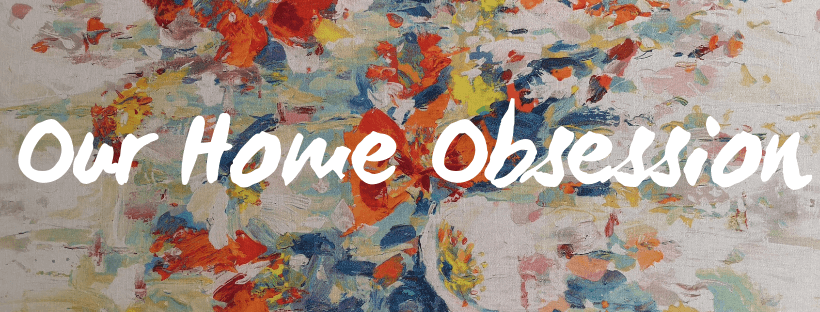
What a difference peel and stick wallpaper makes!!!! Seriously, this morning I felt like we were still ages away from finishing up the utility and now I can’t pass by this room without smiling! I had planned on showing you a finished boiler cover today, but you might have seen on my Instagram, the hinges weren’t working out and it’s going to take two weeks for the new ones to get here! But let’s forget about that for now and take a look a look at this fabulous wallpaper!! I can’t resist reminding you of the before…

Yesterday was my first time using a peel and stick wallpaper. The quality of this wallpaper is unreal. I love the unusual design of the feathers, plus it was very forgiving and easy to work with. Though I can’t lie, I had a major hiccup, which you’ll see soon!
What do you need?
- Peel and stick wallpaper
- Razor blade or Stanley knife
- Level
- Measuring tape
- Pencil
- Smoother (I used a dough scraper, but a credit card will also work)
What to do
- Make sure your walls are squeaky clean.
- If your wallpaper is going all the way around the room, start on an internal corner. The pattern will never fully line up at the end, but it’s much less noticeable in a corner.
- If you are right handed, install your panels from left to right. This makes it easier to trim. Vice-versa if you are left handed.
- Measure the width of the first panel. You will want to add a little extra wallpaper around the top, sides and bottom of your wall. This allows you to follow the contours of your wall exactly and trim the excess off. Remember, rarely is a wall perfectly straight!
- The first corner is the hardest. Use you pencil and level to mark the two sides of the corner, exactly where you want the paper to line up. It’s one less thing to concentrate on when you’re trying to attach it.
- Pull back the top 10cm from the backing and press it in place. When it’s a peel and stick wallpaper, don’t be afraid to gently remove and re-apply if you have made a mistake!
- Use the smoother to push any air bubbles out as you go.
- Once the panels are in place, it’s time to trim off the excess at the edges. Use your smoother to firmly press against the edge. To hold it steady, push the Stanley knife against the smoother and cut. (See picture below)

Drilled holes before wallpapering 
Using the smoother to cut a clean edge
Some Top Tips
- See picture above: I am planning on adding shelves to this wall so I drilled the holes before wallpapering. This limits any damage to the wallpaper.
- Double check where the pattern on the rolls line up!! I mistakenly attached the first panel on the wrong side!!!!! Disaster! My solution was to cut 4mm of the side of the panel so that the shapes on the different rolls looked symmetrical. If you look closely, you can see the pattern isn’t 100% correct, but it’s not too noticeable as the shapes/designs look complete.
- Some wallpapers can be slightly transparent. If your wall is a dark colour, this will come through. It might be a good idea to paint the wall a light colour, but don’t forget to leave it a few weeks before you apply the wallpaper.
- Don’t throw away scraps until you have completely finished. I was able to hide a few mistakes using them, especially around the sockets!
- Geometric wallpaper can be a great choice for the ceiling, as sometimes floral ones look too unnatural upside-down.
My top 15 choices for peel and stick wallpaper
Many of these shops can customise your wallpaper, both in size and colour. Some of them will even print a design of your choice!
If you’re looking for a few other wallpaper ideas, you can see my DIY geometric wallpaper, my wallpapered drawers or my cheat’s wallpaper using peel and stick stickers!















